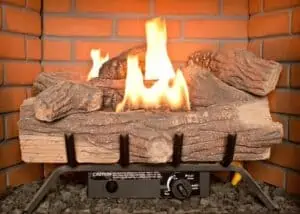How to Install a Propane Fireplace?
Adding a propane fireplace can be a great way to add warmth and ambiance to your home. Many homes today are equipped with gas fireplaces. If you have decided to install a propane fireplace, there are some things to know. You will need to consider the cost of the fireplace, the location of the fireplace, and the type of gas that you will use. Adding a gas fireplace can also add value to your home. A gas fireplace may cost $2,650 to $5,800.
(Searching in Google “gas fireplace service and repair near me“? Contact us today!)

Before installing a propane fireplace, it is a good idea to contact your local gas company. They will check to ensure that there are no leaks. In addition, they will tell you how to properly install your gas line. You can also ask them about installing a gas fireplace insert.
Next, you should prepare your equipment. Most fireplaces are compatible with a standard 2 x 8 or 2 x 10 header. For the best results, you will want to make sure that the header is on a level surface. This will make it easier for you to install your gas line. You may also want to consider installing the gas line on top of the header.
When deciding where to place your propane fireplace, it is important to consider the location of the cylinder. There are many locations in your home where you can install the cylinder. It is also important to make sure that the cylinder is located in a location that is both safe and aesthetically pleasing. If you are unsure where to place the cylinder, you can call a qualified technician to install it for you.
You should also consider the amount of clearance that the fireplace requires. Ideally, you should allow at least 7/8 inches of clearance from the framed opening. Also, pay attention to side and overhead clearances. You should also consider the thickness of the finishing material. This is because the unit should be able to project forward enough to accommodate the thickness.
You may also want to install a pressure regulator to provide the correct amount of pressure. A regulator pigtail is a reusable piece of copper tubing that is threaded into the inlet port of a regulator. This piece of copper tubing can be shaped into a cylinder and bent to fit the regulator under a weather hood.
You should also consider purchasing corrugated stainless steel tubing. It should be long enough to reach the fireplace and extend into your crawl space. It should also be fitted with compression fittings. You should tighten these fittings with adjustable end wrenches.
The best way to determine if you are doing it right is to consult a professional. Most fireplace manufacturers recommend that you follow their instructions closely. A fireplace technician can help you assemble a list of components. You should also consider using a pipe expansion tool to reshape the pipe.
In addition, a gas fireplace may be more efficient than a wood-burning fireplace. A gas fireplace may return 75 to 99 percent of the fuel energy as heat. This means that you will use much less wood, which means that you will save money. The cost of running a gas fireplace will depend on how frequently you use it and how climate-dependent your location is.

